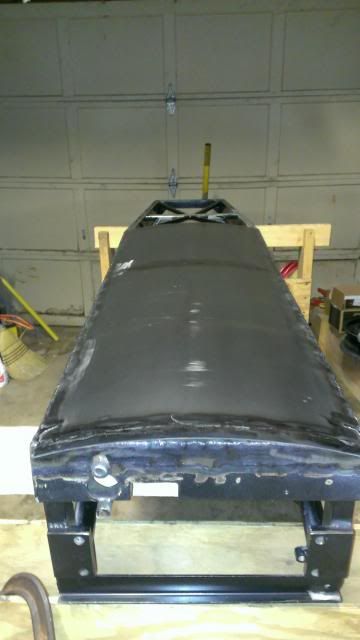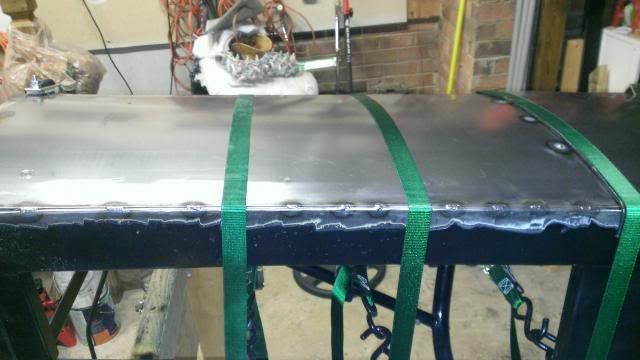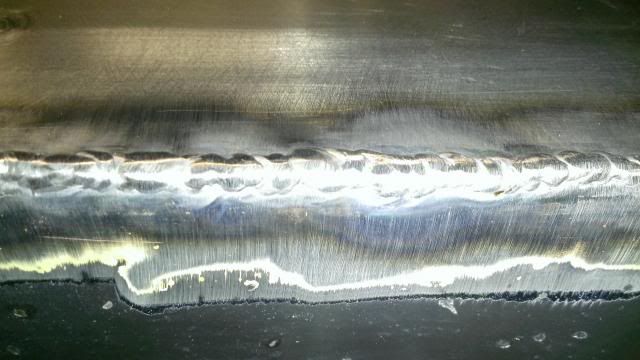Folks -
Need some tips from someone that is pretty handy with sheet aluminum. I want to bend a floor pan for my frame (pictures attached - obviously not finished). It will bend up about 2" on both sides, and attach with dzus tabs. As you can see, the sides of the floor are narrow near the front and then angle out and finally straighten out in the back area. I would really like to avoid cutting and welding it, as I think that will look crap compared to some time invested in shaping it nicely.
Here's my question - can I massage this in on a large box-pan-brake? A little here, a little there, a little more here, etc etc?
Any other good ideas you can think of?
Last resort is to make a male mold and hammer it around that - but with all that effort I might as well make a composite floor. Done that before - more a lengthy than difficult project.
Also - I should mention that I don't want to leave it flat and attach it on the bottom of the car because I don't like the idea of the dzus heads sticking out the bottom of the car. For several reasons.
Thanks!
-Igino





 Reply With Quote
Reply With Quote






 ) Yes, riveting on the sides would work (with bonding). But, it's a lot more work..
) Yes, riveting on the sides would work (with bonding). But, it's a lot more work..







